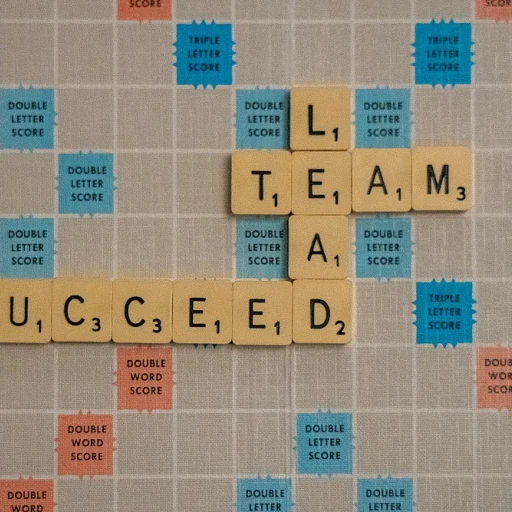The Clock's Chime: Understanding the Value of Time in Business
The Essence of Time in Corporate Strategy
Time, an invaluable commodity in the fast-paced corporate world, holds the key to businesses achieving their benchmarks of success. Every tick of the clock embodies potential profits earned or opportunities missed. Leveraging mentoring for strategic business success underscores the significance of time management as a vital competency for mentorship in grooming future business leaders.
Calculating the Cost of Mismanaged Moments
Time mismanagement can bear a silent yet hefty price tag. Reports from the American Psychological Association highlight that the stress of looming deadlines and packed schedules can result in healthcare costs exceeding hundreds of billions annually. Experts like productivity guru Brian Tracy emphasize that effective time management skills can not only reduce stress but also enhance overall life satisfaction.
Alchemizing Hours into Assets
The philosophy of turning hours into assets is embraced by successful entrepreneurs and CEOs alike. Effective time management enables professionals to control rather than be controlled by, their calendars. It involves intentional planning, prioritization of tasks, and utilizing tools like the Eisenhower Matrix for decision-making, which will be explored further as we chart our course through this time mastery journey.
The Tempo of Tomorrow's Tycoons
Looking ahead, the tides of technology and flexible work environments continue to reshape the contours of time management. From digital detoxes to novel productivity platforms, time management techniques are continuously being refined to adapt to an ever-evolving corporate rhythm, preparing today's aspiring moguls for the tick-tock of tomorrow's business demands.
Charting Your Course: Crafting the Perfect To-Do List
Designing a To-Do List That Works
Your to-do list isn't just a list; it's the roadmap for your day. Crafting one that reflects your priorities and work style is a game-changer for productivity. Task delineation has a direct impact on work performance, as confirmed by a study from the American Psychological Association, which showed that breaking tasks into smaller, manageable parts can reduce the overwhelming nature of complex projects.
Let's dive into the anatomy of an effective to-do list. It should start with your long term goals, broken down into actionable tasks. This is where the Eisenhower Matrix comes into play, helping to categorize tasks based on urgency and importance. Renowned time management expert, Francesco Cirillo, endorses this method, suggesting that it sharpens one's ability to prioritize effectively.
Moreover, the inclusion of time tracking software can refine this process, as detailed in part four of this article series. It helps to ensure that each task isn't just identified but also allocated a specific window of time during the day. David Allen's groundbreaking book, Getting Things Done, asserts the benefits of knowing your 'next action' - a clear step towards managing your to-do list with precision.
Prioritizing for Peak Performance
Setting the right tasks at the top isn't just smart; it's crucial. Brian Tracy's famous 'Eat That Frog' metaphor encourages tackling the most significant, challenging task first. This strategy not just aligns with good time management; it's also a demonstration of strong management skills in action.
Interestingly, reports have suggested that up to 41% of to-do list tasks are never completed. We can alleviate this by applying smart prioritization using tools like the Eisenhower Matrix or the ABC method, maximizing the day's productivity. This prioritization not only helps in individual planning but also in project management, ensuring the team's focus aligns with organizational benchmarks.
The Dynamic Duo: Flexibility and Realism
However, it's not just about what you set to do; it's about anticipating and adapting. An effective list must be flexible. Real-time adjustments are often needed, and this is where effective time management meets agility. The incorporation of flexibility in your task list can significantly reduce stress and promote better work-life balance, making you work smarter, not harder.
In a turbulent workday, your to-do list can serve as an anchor. It’s a dynamic tool that, with proper planning and effective time management techniques, enables professional to control time and streamline productivity. In essence, managing a to-do list is managing time itself, transforming how you approach your work and life.
Maintaining a balance between structure and flexibility in your to-do list can indeed result in a more efficient workday and a harmonious work-life blend. As we turn our attention to strategies dealing directly with time-related stress in part five, remember the power of a well-crafted to-do list in creating a better work-life symphony, discussed later in this series.
For those hungry for more insights on optimizing time management within the broad scope of company strategy, exploring organizational decision-making strategies offers a wealth of information to further hone your mastery of time.
Conquering the Clock: Applying the Principles of the Eisenhower Matrix
Why Prioritizing Is Paramount
When looking at the clock, professionals often feel a twinge of anxiety. With a mountain of tasks staring them down, knowing where to begin is half the battle. Effective time management is not about doing more in less time, but about doing the right things at the right time. This is where the Eisenhower Matrix, a powerful tool for prioritizing tasks and organizing your day, comes into play.
Deconstructing the Eisenhower Matrix
Named after President Dwight Eisenhower, who was known for his incredible ability to sustain productivity, this concept has been revolutionized by productivity experts like Stephen Covey. It divides tasks into four quadrants based on urgency and importance. The breakdown is simple:
- Urgent and important (Q1): Tasks that require immediate attention.
- Important, but not urgent (Q2): These contribute to long-term goals and should be scheduled.
- Urgent, but not important (Q3): Delegate these tasks if possible.
- Neither urgent nor important (Q4): These are time-wasters and should be eliminated.
Research shows that people who use the Eisenhower Matrix effectively can boost their productivity significantly. For instance, a study in the American Psychological Association suggested that understanding the difference between 'urgent' and 'important' is key to time management.
Putting the Matrix to Work
Employing the Eisenhower matrix helps sort the wheat from the chaff, enabling a clear view of what deserves your attention. It's not just a theory, it's a practical, actionable system. Applying this tool can help you focus on what truly matters, decrease stress, and gain a sense of control over your time.
It's a method even top business strategists swear by to maintain balance while juggling multiple projects. For further insights on strategies that help hone one's approach to company targets, explore persuasion in practice.
Life Beyond the Urgent
While Q1 tasks get attention due to their pressing nature, shifting toward Q2 tasks is where the real magic of time management lies. Brian Tracy, a renowned speaker on productivity, emphasizes spending the majority of your time in the second quadrant to achieve long-term success.
Planning, reflection, and development tasks often fall here. They don't scream for your attention, but tending to them can bring better work-life balance and lay the groundwork for future achievements.
Incorporating the Eisenhower Matrix into your time management approach can lead to more than just increased efficiency. It can also connect to higher satisfaction and a more strategic approach to life and work itself.
The Ticking Tech: Leveraging Time Tracking Software for Efficiency
Embracing Digital Efficiency: The Power of Time Tracking Tools
In the previous discussions on valuing time and effectively organizing tasks, we underlined the significant role time plays in our work lives. But how do we quantify the abstract? Enter the realm of time tracking software – digital magicians that turn hours into data, providing a bird's eye view of where our minutes are migrating during the bustle of a workday.
Unlocking Productivity with Precision
Time tracking software brings a microscope to our daily grind. It shines a light on hidden time sinks and celebrates the nooks where productivity peaks. Tallying every tick of the clock against our activities, apps like Toggl and Harvest serve up a smorgasbord of stats that lay bare our work habits. For instance, a study by the American Psychological Association revealed that the use of such tools can reduce the time spent on non-essential tasks by up to 40%, channeling that time into more impactful efforts.
The Eisenhower Matrix Reimagined
Consider the Eisenhower Matrix from our earlier discussion - a quadrant that helps categorize tasks based on urgency and importance. Time tracking tools breathe digital life into this principle, allowing for tasks to be tagged and sorted accordingly. They facilitate a reevaluation of what's urgent versus important, often blurring the lines when analytics show more time is dedicated to perceived urgencies which may not line up with overarching goals.
Case Studies: Success Stories in the Making
Real-world success stories abound. Businesses of various scales have adopted time tracking to startling effect. For example, a case study featured in Harvard Business Review profiles an enterprise that, after implementing time tracking, refined project management approaches, resulting in a 30% decrease in time overruns. This is no outlier – across the board, the use of time tracking software has demonstrated the capacity to streamline operations and sharpen the focus on high-value activities.
Reducing Stress by Regaining Control
Furthermore, the stress spawned by elusive deadlines and a muddled sense of progress can be quelled by the clarion clarity provided by time tracking tools. They let you see in real time – no pun intended – how projects and tasks are progressing, offering a measure of control that is often lost in the white water rapids of the workday.
Navigating the Nuances: Privacy and Practicability
Productivity isn't the sole story here. The conversation around time tracking also touches upon employee privacy and autonomy. A nuanced approach that empowers rather than polices is key to harmonizing benefits while respecting individuality. As Brian Tracy eloquently puts it, "Time management is a vehicle to take you from wherever you are to wherever you want to go."
Integrating Software Solutions for Sustainable Success
Tools like Monday.com and Asana don’t just measure; they manage. By incorporating time tracking into project management, they fan the flames of productivity, keeping teams aligned with the broader mission while fostering a shared understanding of how individual efforts knit into the collective fabric.
In the symphony of structured days we strive for, the right time tracking software is less of a metronome and more of a maestro – orchestrating a fluid and harmonious blend of priorities, tasks, and time.
Pause the Panic: Strategies to Alleviate Time-Related Stress
Identifying Stress Factors in Time Allocation
An element often overlooked in discussions about time management is the role stress plays in disrupting our workdays. Reports suggest that stress-related productivity loss could cost companies huge sums annually—highlighting the urgency to manage it effectively. When pressure mounts, and the sand seems to slip through the hourglass too quickly, stress can make us feel as though we have lost control over our time, leading to poor time management habits.
Applying Time Management Techniques to Reduce Stress
Luckily, the skills we use for managing tasks can also become our allies against stress. Concepts like the Eisenhower Matrix reveal the importance of differentiating between urgent tasks and important ones. By refining our focus on high-priority activities, we can actually alleviate feelings of being overwhelmed and regain a sense of control—key aspects for stress reduction.
Time Management: A MIndful Approach to Work Life
Good time management is not just about jamming more tasks into your day; it's also about creating better work-life harmony. Imagine fulfilling your daily objectives without the constant dread of impending tasks. Achieving this state requires adopting strategies that match your unique work rhythm, emphatically recognizing when to push through and when to step back for a respite—a testament to effective time management work principles.
Insights from the Pros: Gleaning Wisdom on Mitigating Stress
Experts like author Brian Tracy suggest taking time to plan your days, weeks, and months can significantly reduce stress. His advice echoes throughout productivity circles and finds support in studies indicating that planning can enhance one’s sense of control over time, thus reducing work-related stress and bolstering overall productivity.
Practical Steps to Put Anxiety on Hold
So what does better management of time look like in practice? It starts in the morning with a clear list of tasks tailored to your goals. From there, employing techniques such as time blocking or even using time tracking software can help in creating defined boundaries, allowing you to focus on one task at a time. And remember, part of managing time well includes setting aside moments for short breaks to help clear your mind and reduce stress. Frequent short breaks have been shown to not only reduce stress but improve overall productivity.
Taming Tools: The Role of Technology in Stress Management
As digital solutions for time management become increasingly sophisticated, they open up possibilities for managing our workday stresses. Apps designed to help with work-life balance, such as those that gently remind us to take breaks or those that automatically silence notifications after hours, aid in building a healthier approach to work.
The Symphony of Structured Days: Harmonizing Tasks and Time
Seamlessly Blending Tasks into Your Day
Imagine having a symphony conductor's grace, orchestrating a day where every task flows smoothly into the next. That's the ideal scenario we often aspire to in our work lives. Yet, for many, the reality feels more like a cacophonous scramble. Good time management skills hinge on not just identifying the urgent tasks but weaving them into the fabric of your day with rhythm and purpose.
Syncing Your Activities with Time Management Strategies
Effective time management isn't a one-size-fits-all skill—it's tailored to individual rhythms and responsibilities. This means recognizing that certain tasks are better suited for specific times of the day. There's an art to aligning tasks to your natural productivity peaks. It's what productivity experts often refer to as building a 'task rhythm'. According to a study published by the American Psychological Association, task alignment with individual chronotypes lends to reduced stress and improved workplace performance.
The Science of Prioritizing Tasks
Francesco Cirillo's renowned Pomodoro Technique and the Eisenhower Matrix have revolutionized the way we categorize and tackle the work before us. By carving out time for deep-focus activities and slotting in quick, administrative tasks, we create a more balanced day. A report on productivity reveals that individuals who apply a mixture of focused and diffused modes of thinking—a concept supported by Nobel laureate Daniel Kahneman—experience up to a 40% uptick in productivity.
Orchestrating a Better Work-Life Balance
The sound of a ticking clock should not be a source of dread but a cue for controlled cadence in our workday. Setting long-term goals and breaking them down into daily tasks allows clear signals to transition smoothly through the day. Implementing time management tips like setting clear boundaries and taking regular, mindful breaks ensure we're working smarter, not harder. These strategies prevent professional demands from overwhelming personal life, crucial to maintaining a harmonious work life balance.
Task Management Reinvented with Technology
With time tracking software, like those recommended in Harvard Business Review, managing our task list becomes less about guesswork and more about strategic planning. Pinpoint accuracy in how long tasks take can enlighten us on how to manage time effectively. Technology empowers us to adapt and refine our daily task orchestra, turning jarring noise into a masterful ensemble.
The blend of traditional and digital tools gives us a powerful suite to control time and amp up our productivity. Anecdotes from leading CEOs, highlighted in case studies on C-Suite Strategy's blog, reveal that embracing these methods has transformed their workdays from frenetic to flowing. So, whether it's your deadline-driven project or the soft chime reminding you to stretch, each is a note in the opus of your day, played in perfect time.
Beyond the Clock: Achieving Work-Life Zen Through Time Mastery
Embarking on the Quest for Work-Life Zen
A harmony of sorts, where the gentle rhythm of your personal life blends seamlessly with the demanding beat of professional duties, may seem like a distant symphony. Yet, truly effective time management extends far beyond the structured confines of the office and into the serene spaces of our personal existence. Work-life balance isn't just a catchy phrase; it's about finding your flow amidst the ebbs and flows of day-to-day responsibilities and carving out time for life's melodies.
Balancing Acts: Tips from the Top
Those at the helm of productivity often share insights on how to juggle the multifaceted aspects of life. For instance, the teachings of Francesco Cirillo's Pomodoro Technique encourage short bursts of focused work followed by breaks to refresh and recharge. Cirillo's method speaks to the reality that good time management skills are in fact life skills that spill over into our personal realms, illustrating that managing time is truly about managing self.
Integrating Life into Your Day Planner
Integrating personal time into your day isn't just beneficial; it's necessary for maintaining sanity and productivity. Author and speaker Brian Tracy suggests that for sound time management, one must 'set clear goals and priorities.' The act of setting aside time for personal growth, hobbies, and family is not frivolous – it's a critical component of leading a balanced life. Implementing techniques, such as the Eisenhower Matrix, not only assists with prioritizing work tasks but also helps in identifying the crucial areas of your personal life that require vigilance.
The Beat Goes On: Continuous Time Evaluation
It's not just about setting the stage once; the pursuit of work-life zen is an ongoing rhythm that needs continuous adjustments and fine-tuning. The American Psychological Association emphasizes the benefits of avoiding poor time management by actively reviewing how one spends their hours, thus enabling better control over time and a healthier work-life blend.
Stepping Back to Sprint Forward
The paradoxical philosophy of stepping back to leap forward encapsulates the essence of taking time out for one’s self to ultimately increase efficiency at work. Managing tasks effectively is as much about recognizing when to push forward as it is about knowing when to step back and recover. Time tracking software and Eisenhower’s Matrix are not solely tools for work; they can also be allies in carving out time for relaxation and personal pursuits.
The Symphony of the Self: Personal Rhythms and Professional Harmony
When life and work are in tune, the outcome transcends the sum of its parts. It's about the crescendo of a job well-done without neglecting the gentle pauses of personal joy and fulfillment. Let's not just manage our work or our time; let's orchestrate a life that sings of balance, growth, and satisfaction.
The Tick-Tock of Tomorrow: Anticipating Future Trends in Time Management
Embracing Trends: Steering Through Time Management Innovations
As we venture into the future, time management evolves into an even more critical skillset in the corporate whirlwind. The pace of work isn’t slackening; it's sprinting, and adapting to emergent trends is paramount for staying ahead. Productivity tools aren't just nifty gadgets anymore; they're becoming intelligent partners in our day-to-day professional lives.
Integration of AI and Machine Learning
The surge of artificial intelligence in optimizing time management heralds a new era of efficiency. AI’s prowess to analyze behaviors and suggest personalized time management strategies is something to look out for. This isn't sci-fi; businesses using AI have seen a productivity hike of up to 40% according to some studies by Accenture.
The Rise of Remote Work and Digital Workspaces
The remote work revolution changes the time metric from hours spent in an office to actual tasks completed. As per findings in FlexJobs reports, remote workers commonly report higher productivity levels due to fewer interruptions. Digital workspaces augment this trend, letting you access your work life from a Bali beach or your living room couch.
Urgent Over Important: A Shift in Focus
The adoption of the Eisenhower Matrix accelerates, with professionals prioritizing tasks based on urgency over importance, aligning with Covey's principles. The mantra of doing 'important' but not 'urgent' activities first is more relevant with every tick of the clock.
Mindfulness and Time Blocking
There's a growing wave of mindfulness that’s influencing the corporate stratosphere. The practice of time blocking, as advocated by time management gurus like Cal Newport, is gaining traction. Establish blocks of time for deep work and watch distractions wither away.
Time Wealth: A New Currency
In this fast-paced digital age, time has become a sort of currency—a marker of personal and professional wealth. The Harvard Business Review points to a striking insight: individuals are now measuring success by how much 'time wealth' they have, as much as their financial wealth.
Autonomy and Flexibility
The traditional 9-5 model is morphing as businesses grasp that offering autonomy over work schedules improves both morale and output. Project management takes on new dimensions with self-managed teams tackling tasks when they're most energized.
Quantifying Self-Improvement: Wearables and Apps
Fashion meets function with wearable tech that helps track time and activities. Combine this with time tracking software that’s more refined than ever, and you get a formula for personal efficiency that’s off the charts. Just look towards the growing market for personal productivity apps to see the trend in full swing.
Building a Continuous Learning Culture
Innovation doesn't clock out. Companies that foster continuous learning among their employees find that time management isn't just about managing daily tasks, but about facilitating growth and knowledge acquisition—a surefire path to staying relevant in a constantly evolving marketplace.














